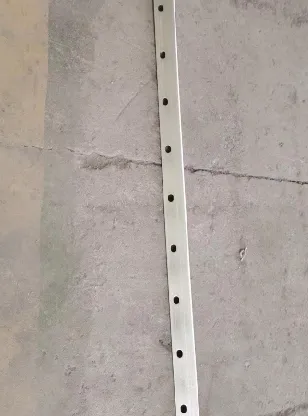loading...
- No. 9, Xingyuan South Street, Dongwaihuan Road, Zaoqiang County, Hengshui, Hebei, China
- admin@zjcomposites.com
- +86 15097380338
- Welcome to visit our website!
Understanding the Benefits and Applications of FRP Treads in Modern Construction
Understanding FRP Treads A Comprehensive Overview
Fiber Reinforced Polymer (FRP) treads have emerged as a popular choice in various industries due to their durability, lightweight nature, and resistance to environmental factors. This article aims to delve into the characteristics, advantages, applications, and maintenance of FRP treads, illustrating why they are increasingly favored in construction and industrial settings.
What are FRP Treads?
FRP treads are stair treads made from a composite material that consists of a polymer matrix reinforced with fibers, typically glass or carbon. This combination results in a product that is not only strong and lightweight but also resistant to corrosion and impact. The treads can be manufactured in various shapes, sizes, and colors, allowing them to meet specific design and functionality requirements.
Key Advantages
1. Durability and Longevity One of the primary benefits of FRP treads is their exceptional durability. Unlike traditional materials like wood or metal, FRP does not rust or rot, making it ideal for environments exposed to moisture or harsh chemicals. This attribute extends the lifespan of the treads, reducing the need for frequent replacements.
2. Lightweight FRP treads are significantly lighter than their metal or concrete counterparts. This characteristic not only makes them easier to handle during installation but also decreases the overall load on structures, which can be crucial in certain architectural designs.
Understanding FRP Treads A Comprehensive Overview
4. Corrosion Resistance Many industries, such as chemical processing and waste management, operate in corrosive environments. FRP treads are impervious to corrosive agents, making them an ideal choice for facilities handling such materials.
frp treads

5. Customizability With advancements in manufacturing technology, FRP treads can be tailored to meet specific project requirements. They can be produced in various colors, patterns, and finishes, allowing for aesthetic integration into different environments.
Applications
The versatility of FRP treads makes them suitable for a wide range of applications. They are commonly used in
- Industrial Facilities For areas requiring high durability, such as factories and warehouses, where heavy machinery and chemicals are prevalent. - Commercial Buildings In settings that prioritize aesthetics and safety, such as shopping malls and office buildings. - Outdoor Settings For parks, pools, and balconies where moisture resistance and slip prevention are crucial. - Marine Applications Due to their resistance to saltwater corrosion, FRP treads are ideal for use in docks and ships.
Maintenance
One of the appealing aspects of FRP treads is the minimal maintenance required. Regular cleaning with water and a mild detergent is typically sufficient to maintain their appearance and functionality. Unlike wood, there is no need for painting, sealing, or staining, which not only saves time but also reduces overall maintenance costs.
Conclusion
In conclusion, FRP treads represent a significant advancement in tread technology, offering a blend of durability, safety, and design flexibility. As industries continue to recognize the benefits of using materials that are both functional and aesthetically pleasing, FRP treads are likely to gain further traction. By choosing FRP treads, businesses can ensure a long-lasting, low-maintenance solution that enhances safety and performance in their environments. With the continuous development of composite materials, the future looks promising for FRP applications across various sectors.
-
The Rise of FRP Profiles: Strong, Lightweight, and Built to LastNewsJul.14,2025
-
SMC Panel Tanks: A Modern Water Storage Solution for All EnvironmentsNewsJul.14,2025
-
GRP Grating: A Modern Solution for Safe and Durable Access SystemsNewsJul.14,2025
-
Galvanized Steel Water Tanks: Durable, Reliable, and Ready for UseNewsJul.14,2025
-
FRP Mini Mesh Grating: The Safer, Smarter Flooring SolutionNewsJul.14,2025
-
Exploring FRP Vessels: Durable Solutions for Modern Fluid HandlingNewsJul.14,2025
-
GRP Structures: The Future of Lightweight, High-Performance EngineeringNewsJun.20,2025
